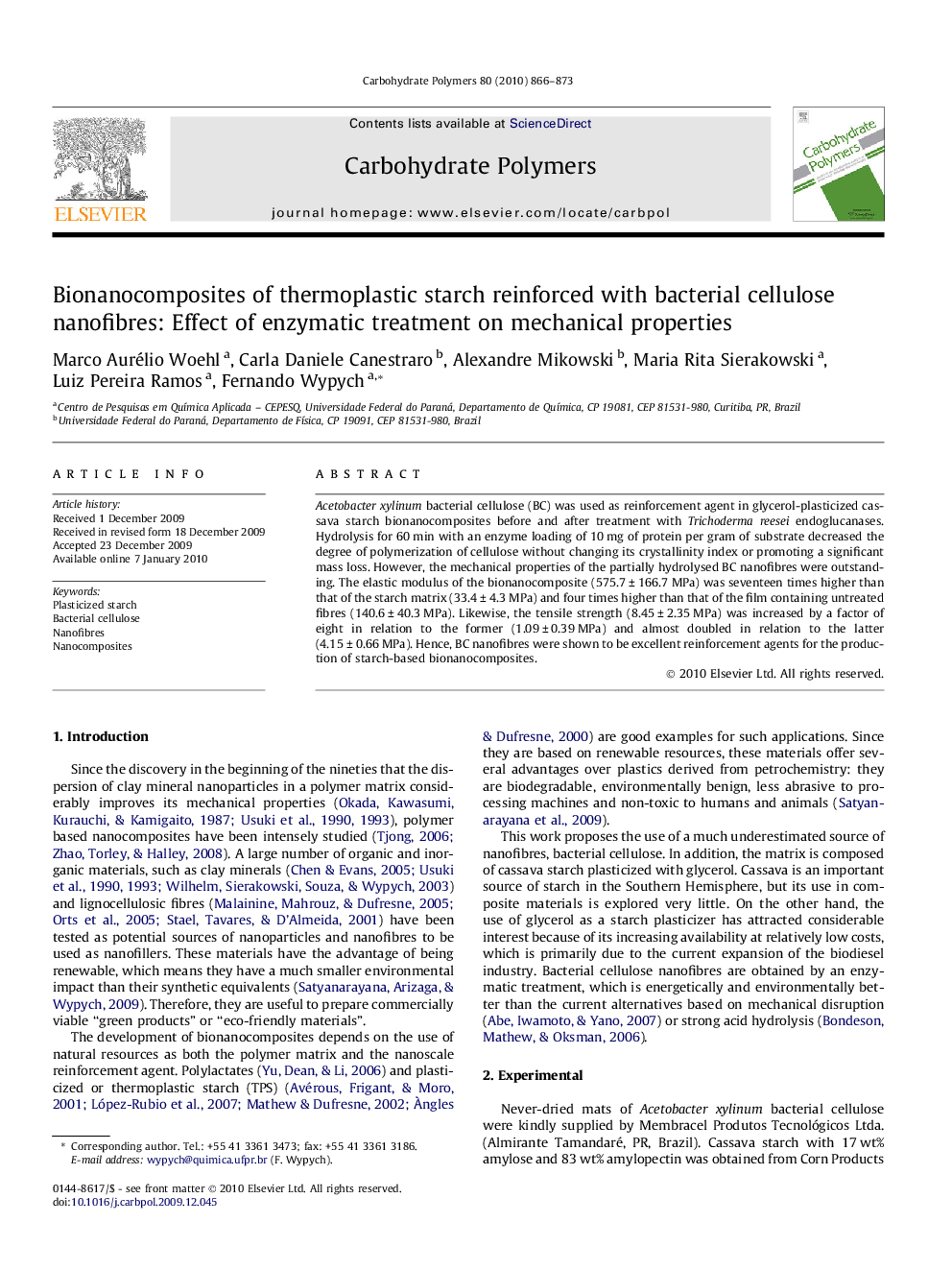| Article ID | Journal | Published Year | Pages | File Type |
|---|---|---|---|---|
| 1387246 | Carbohydrate Polymers | 2010 | 8 Pages |
Acetobacter xylinum bacterial cellulose (BC) was used as reinforcement agent in glycerol-plasticized cassava starch bionanocomposites before and after treatment with Trichoderma reesei endoglucanases. Hydrolysis for 60 min with an enzyme loading of 10 mg of protein per gram of substrate decreased the degree of polymerization of cellulose without changing its crystallinity index or promoting a significant mass loss. However, the mechanical properties of the partially hydrolysed BC nanofibres were outstanding. The elastic modulus of the bionanocomposite (575.7 ± 166.7 MPa) was seventeen times higher than that of the starch matrix (33.4 ± 4.3 MPa) and four times higher than that of the film containing untreated fibres (140.6 ± 40.3 MPa). Likewise, the tensile strength (8.45 ± 2.35 MPa) was increased by a factor of eight in relation to the former (1.09 ± 0.39 MPa) and almost doubled in relation to the latter (4.15 ± 0.66 MPa). Hence, BC nanofibres were shown to be excellent reinforcement agents for the production of starch-based bionanocomposites.
